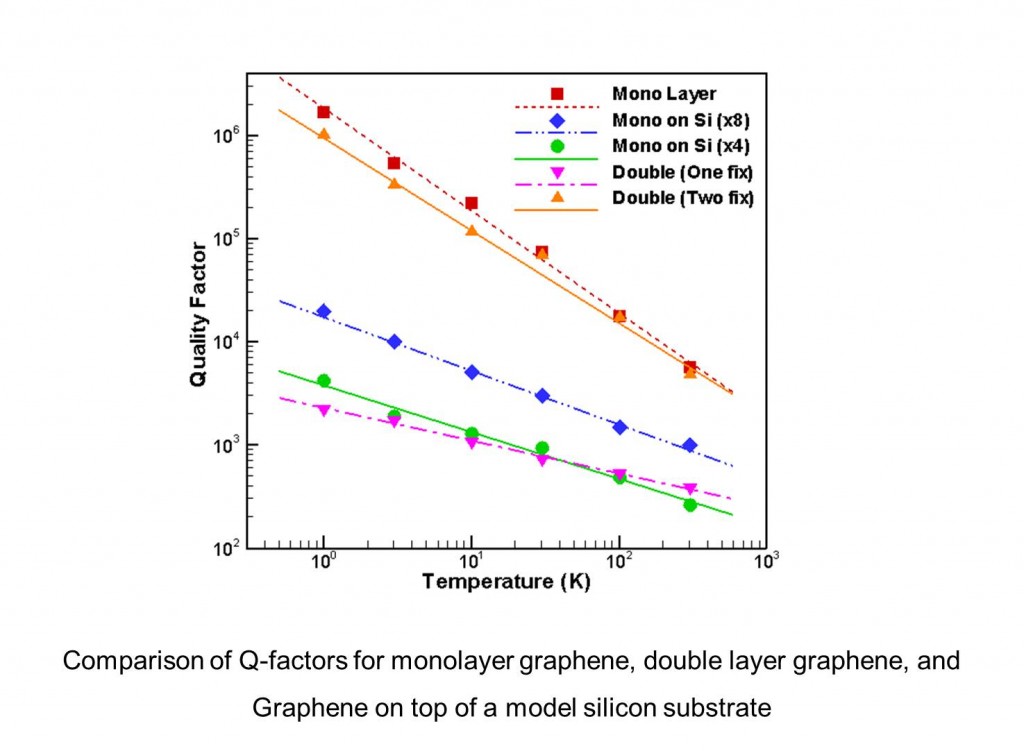Besides edge effects, graphene nanoresonators are expected to lose energy through interlayer friction effects, and the quality of attachment through van der Waal’s forces to the underlying (model silicon) substrate.
We have quantified these losses as compared to an ideal graphene monolayer, as seen below. The key result is that, if intrinsic interlayer friction and extrinsic attachment effects are accounted for, we find room temperature Q-factors on the order of 500 to 1000, which are comparable to those observed experimentally. These Q-factors would be lower if gas damping were accounted for, which we are currently investigating.
